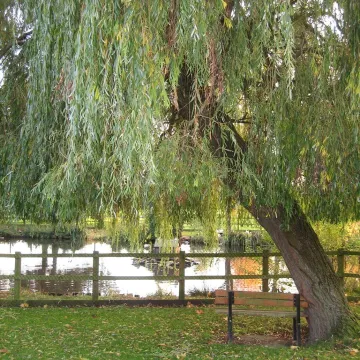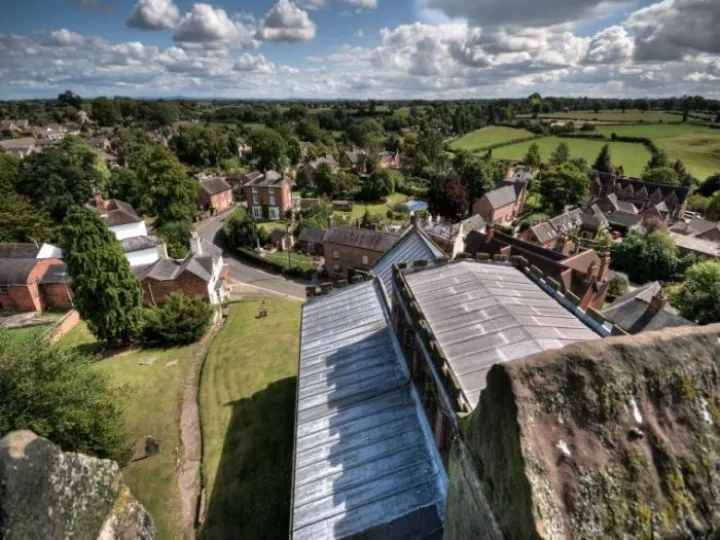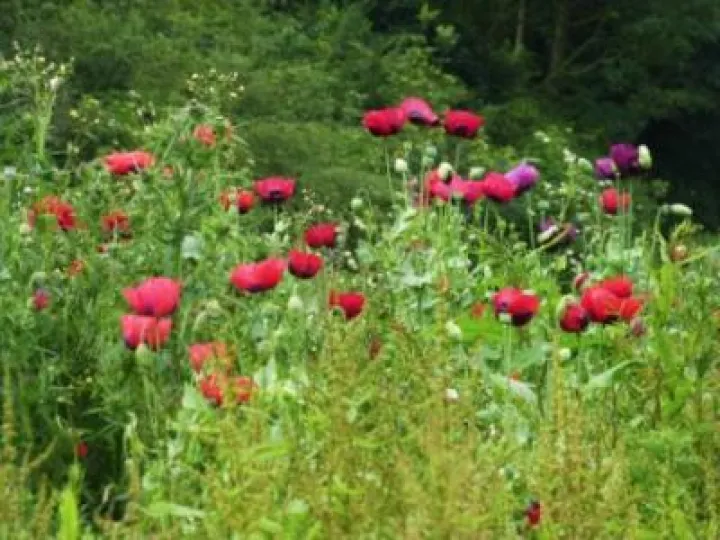







One could be misled into believing that the weather is the same for us all. Well it`s not really. Not only does the weather differ from district to district it can also be affected by the locality and its topographical features.
There are several local features that affect our weather here in Audlem and perhaps the most important is the position, and height of the Welsh mountains.
Our prevailing wind is South West and so before getting to us it has to lift over the mountains. You might say that since this lift of air occurs seventy miles away and the air is restored to a lower level twenty five miles away, it is unlikely to change the weather here in Audlem. That is a mistaken belief.
Perhaps I should explain at this point that an aviator sees the weather differently. In the first and most important place the weather can be his enemy and might just be the means of bringing him down to earth with a bump. Most of the accidents to United Kingdom light aircraft are weather related and are usually described in the ensuing enquiry report as " Controlled Flight into Terrain". That description means simply: "he flew into a mountain because he did not see it." i.e.(he was in cloud).... or, the power of the wind drove him into it "
Why did the cloud sit over the mountain? The moist air, which is the wind, was forced upwards to a colder layer which turned the moisture into clouds.
Why did the gusts generate so powerfully that they forced him down into the mountain? A phenomenon called "Mountain Waves" was generated upon the downwind side of the mountains.
This last phenomenon is something that from time to time occurs over Audlem and indeed can be found active as much as fifty miles down wind of the mountains. It is generated as follows: as the air is swept down the mountainside of the last in the series of mountains (in our case the Berwyn range), it does not simply resume its untroubled journey onwards over the flat plain of Cheshire. What it does is to continue rippling up and down until eventually it peters out or perhaps reaches the Pennine Chain and is once again swept upwards.
This means that if I fly up to the Berwyns and I am not aware of the situation (you cannot see moving air), I could very easily be swept into the near face of the mountain by forces much more powerful than a 105 Horsepower engine can cope with. The only course of action is full power and reverse track as quickly as possible.
However, the trick is not to get into that situation in the first place and an observance of the clouds can give a pointer. As the air ripples off the mountain top it continues to ascend and descend in a pattern which produces clouds that are shaped like a lens (Lenticular clouds ) which though they are in a fast moving body of air, appear not to move. I have observed Lenticular clouds over Audlem many times and their apparently static position arises from the fact that as the air rises it makes cloud and as the air then decends the cloud dissipates, so what you are seeing is a telltale (which appears static) which, if ignored, can give you a rough ride at best or a 'Controlled Flight into Terrain 'at worst.
If you are keen to observe the factors which cause this phenomenon, a stream is the best place to look, as air like water is a fluid and behaves in the same manner. That is, you should find a place where a large stone or boulder lies upon the stream bed up to several inches below the surface. You will see that despite the fact that the boulder does not protrude above the surface it causes a surface disturbance both up stream and down. Some of the water will accelerate to go round the boulder but some will go over the top and will ripple for as much as two or three metres beyond a large boulder. There you see "Mountain Waves" in miniature.
Another local feature arises out of our position vis a vis the mountains. I have often enjoyed a local flight around the boundaries of Cheshire in bright sunshine to be met with a wall of dense cloud (ground to several thousand feet high ) almost completely around our boundaries. We have been bathed in sunshine and all our neighbouring counties are in total cloud cover. You don't know how lucky you are.
If you look at a map with contours you will see that we live in bowl. Therefore in some circumstances the wind will sweep down from one mountain range converting cloud to invisible moisture (allowing the sun to shine) and having crossed Cheshire it then sweeps up and re-generates the cloud. So we bathe in sunshine to the annoyance of Denbighshire, Shropshire and Derbyshire.
You may have noticed from the TV weather map that most of the wind and rain bearing Atlantic Weather systems (Cyclones) strike at Ulster and Scotland. You may also have noticed that they always rotate anti-clockwise, whereas anti Cyclones, which bring calm weather, rotate clockwise. It therefore follows that in the Northern Hemisphere, if we stand with our backs to the wind, the really bad weather is always on our left hand. This was first noticed by a Dutchman called "Buys Ballot". Quite how Buys Ballot worked this out I do not know, but for his trouble his finding is now enshrined in" Buys Ballots law" and featured large in my Metrology exam for my pilot's licence in 1965.
Have you ever noticed a rain storm or squall approaching........often at great speed? They can be very dangerous to the aviator contemplating a landing or take-off. What you don't see is that on the leading edge of the storm, maybe a half-mile preceding the rain, is a considerable increase in the speed of the wind. I have been caught out by this phenomenon on a few occasions.
I have looked across Western Cheshire having arrived back to land and observed a line squall approaching say at Baddilly. Just arriving close to touch-down in fairly calm wind and suddenly being seized by the most vicious wind with turbulence appearing apparently from nowhere and facing the aviator with two uncomfortable choices ...the rock and the hard place. The first is to turn up the wick and climb away through the turbulence and rain and possibly have to land elsewhere or stooge around until the squall and its turbulence have gone.
The second choice is to continue with the landing fighting the turbulence all the way down with first the Port wing going down and next the Starboard wing going down, with mayhem all the way to produce what my instructor used to describe as, not a landing, but an arrival. On such occasions I have been glad to be well strapped into the aircraft – beware of Squalls!
Then there is "Wind Shear"........You can't see it, but when you arrive at it but boy you can feel it. A fairly stiff breeze on the approach to land is quite helpful – it slows down the forward speed and makes for a sedate landing. However the wind makes no bargains with the aviator and does not agree to maintain the same velocity at all layers on the way down. So a nice steady descending path aiming for the runway threshold is maintained down through 1000 feet and maybe 500 feet and then because the near surface wind is slowed by ground objects, i.e., trees, hills, barns, hedges etc. the wind reaches a layer of lower velocity quite suddenly and your safe 70 mph (airspeed) descent suddenly becomes 50 mph and is dangerously near the stall and you are too low to recover from a stall. To compound the situation you are now heading by a steeper descent path for the ground and short of the runway into the rough (or in my case the River Weaver).
So it is incumbent upon the landing aviator to keep his hand on the throttle in order to make up the deficiencies of wind and weather. Then there is the Cheshire gap! But enough for today.
I hope you will look at the sky with different eyes and maybe see some of the features I have described.....they will be there from time to time, I do assure you.
Golf. Foxtrot Alpha Romeo Romeo.
This article is from our news archive. As a result pictures or videos originally associated with it may have been removed and some of the content may no longer be accurate or relevant.
Get In Touch
AudlemOnline is powered by our active community.
Please send us your news and views using the button below:
Email: editor@audlem.org





